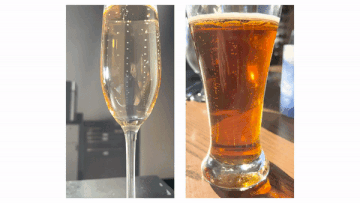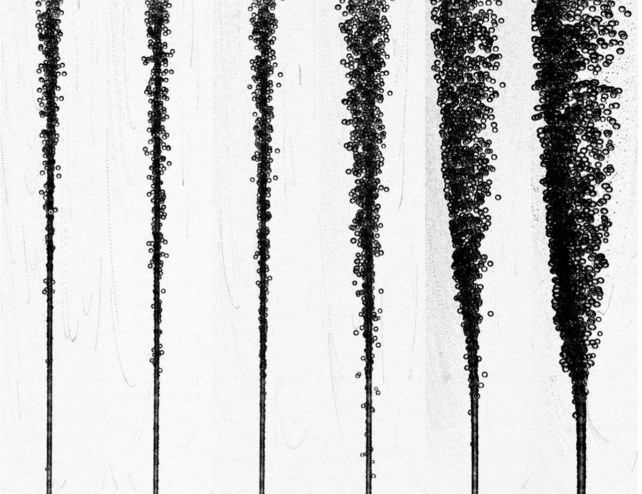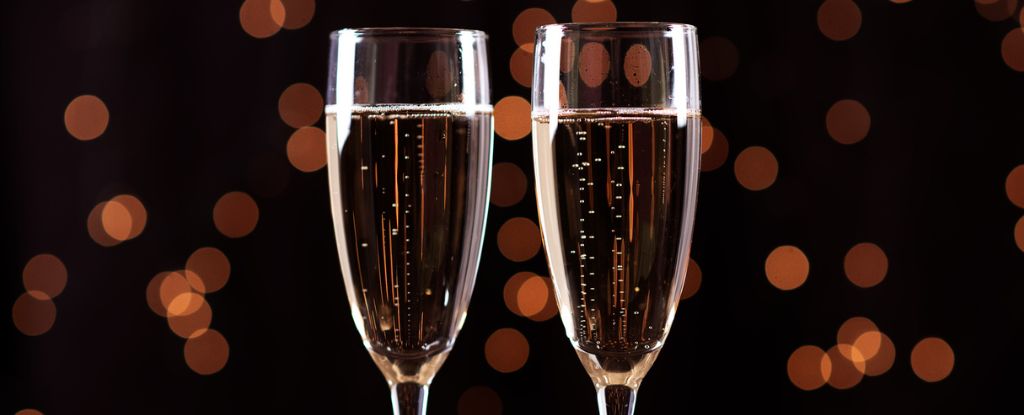Products You May Like
The delicious way that champagne bubbles tickle the tongue is based on how ‘soapy’ the wine is, according to new research.
When poured into a glass, carbonated drinks don’t all fizz the same way. Sparkling water creates a firework-like display of popping bubbles, bursting forth across the entire surface of a glass. Beer has bubbles that start in a line but quickly spread outwards to clump in seemingly random, rising patterns.
But champagne is elegant. It creates a smattering of bubbles that drift upwards in clean straight lines, almost as though they were getting pumped onto a conveyor belt by some invisible factory at the bottom of the flute.

So what makes champagne bubbles so pleasantly predictable?
Physicists from Brown University and the University of Toulouse in France have found the secret. Champagne, prosecco, and other sparkling wines, they say, contain more soap-like compounds, known as surfactants.
In fact, these fatty acids seem to be part of what makes the drink so palatable.
“The theory is that in Champagne these contaminants that act as surfactants are the good stuff,” explains engineer Roberto Zenit, who studies fluid mechanics at Brown University.
“These protein molecules that give flavor and uniqueness to the liquid are what makes the bubbles chains they produce stable.”
In experiments, researchers injected nitrogen bubbles into different liquids and glasses using a series of specially shaped syringes.
By altering the size of the bubbles and the composition of the drink itself, the team created different sparkling patterns.
When researchers added more surfactants to a lager, the unstable bubble chains become stable.
Even without surfactants, researchers could achieve this by making the bubbles in beer bigger. But not water. It didn’t matter how big the bubbles got in the water. Without surfactants, its bubbles always seemed to behave chaotically.
“These two experiments clearly indicate that there are two possibilities to stabilize a bubble chain,” researchers conclude.
Running the numbers on density, surface tension, and viscosity, they then figured out why.
A bubble rising through the water, which has a low concentration of surfactants, creates a wake with two strands that rotate in different directions. Each subsequent bubble is lifted in the opposite way to its predecessor.
“Therefore, the bubbles are pushed sideways, leading to an increasing separation and deviation from the in-line configuration,’ researchers explain.
The image below shows this unstable-ness in action.

But when a liquid contains enough surfactants, the structure of a bubble’s wake changes so that the trailing bubble is sucked up in line with the one before it.
The way that champagne fizzes may not seem like a pressing scientific question, but the knowledge is actually quite useful.
“We’re interested in how these bubbles move and their relationship to industrial applications and in nature,” explains Zenit.
For example, now that scientists know surfactants can alter the way bubbles rise, they can look at bubble chains in just about any liquid and use that information to assess its level of surfactant contamination.
This could be particularly useful near deep-sea vents gushing methane and carbon dioxide, where direct sampling of materials is difficult, or to keep an eye on aeration tanks at water treatment facilities.
The proof was in the prosecco the whole time.
The study was published in Physical Review Fluids.
